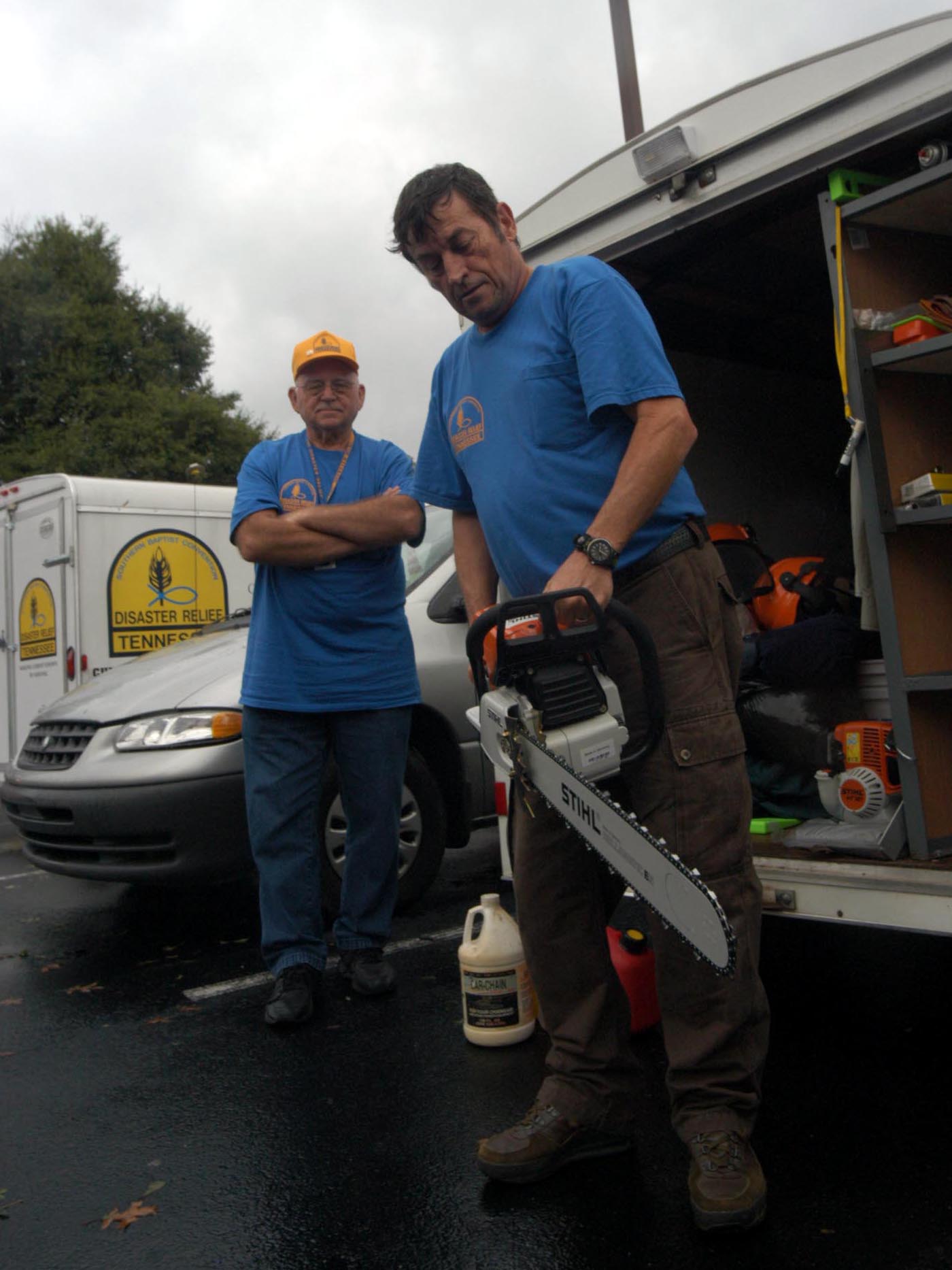
BILOXI, Miss. (BP)–New Orleans Baptist Theological Seminary, like all of urban New Orleans, was at the mercy of rising floodwater from levy failures Aug. 30, after Hurricane Katrina’s initial assault Aug. 29 did not appear to trigger widespread flooding.
The seminary’s status remained uncertain Aug. 30, with efforts to contact key officials proving unsuccessful during the day due to telephone difficulties.
The campus will be closed until Sept. 6, according to the seminary’s website, but students were urged not to return to the campus “until the all clear is given” on the website.
Chris Friedmann, associate vice president for operations at NOBTS, and a small crew of essential campus security and maintenance workers set up a command center on campus to ride out the storm. As of 6 p.m. Aug. 29, the seminary chapel had been heavily damaged; an older campus apartment building was in 3 feet of water; and numerous trees had been lost, having been weakened by termites over the years.
New Orleans Seminary President Chuck Kelley issued a mandatory campus evacuation Saturday morning as Katrina approached. Notices were hand delivered to every door on campus, and all students, faculty and nonessential staff members were encouraged to leave immediately.
Reports from the University of Mobile also were unavailable Aug. 30. The Baptist-affiliated university’s website noted, “Due to massive power outages in the Mobile area, the University of Mobile will be closed until power can be restored.”
Hurricane Katrina, with its fierce winds and tremendous power to dump overwhelming amounts of water on land, caused “catastrophic” damage throughout the Gulf Coast from New Orleans to Biloxi, according to the director of the Federal Emergency Management Agency.
President Bush was returning to Washington two days early to work with federal authorities in managing the crisis, and the Red Cross characterized this as the “largest single mobilization that we’ve done for any single natural disaster,” the Associated Press reported.
The death toll continued to rise Aug. 30 as recovery efforts were underway, but officials reported that as many as 80 people died in one Mississippi county alone. Harrison County, which includes hard-hit Biloxi and Gulfport, reported many deaths.
Southern Baptists, as the third largest disaster relief organization in the nation, are traveling to the affected areas with mobile kitchens, shower units, cleanup and recovery units and communication equipment from more than 20 states.
More than 100 volunteers from the Tennessee Baptist Convention gathered at a disaster relief staging area at Cherry Road Baptist Church in Memphis Aug. 30 before heading out to assigned sites. One Tennessee crew headed to the Gulf Coast is equipped with a new laundry unit capable of washing about 20 loads of laundry per hour. Based at First Baptist Church in Hendersonville, Tenn., the unit contains a water heater, four washer units and five dryer units.
Other probable assignments for the Baptist relief units: Tennessee, Texas Baptist Men, Louisiana and Oklahoma going to Louisiana locations, including possibly Slidell, Kenner, Houma, Alexandria, Covington and Baton Rouge. Disaster relief units from Mississippi, Georgia, Florida and Missouri will most likely be sent into Mississippi including Biloxi, Pascagoula, Gulf Shores, Hattiesburg and McComb.
The Salvation Army has requested staffing on two of their kitchens, and the Southern Baptists of Texas Convention and Florida are handling these requests. Units from the Ohio, Texas, Kentucky and Tennessee Baptist conventions will handle the Salvation Army’s other requests.
Units from Alabama most likely will be assigned within their own state where the coastal areas were hard hit, and Southern Baptist disaster relief units from Arkansas, California, Illinois, Iowa, Kentucky, Michigan, Missouri, New Mexico, North Carolina, Ohio and the Virginia Baptist Mission Board are being activated and assigned as well.
Mississippi Gov. Haley Barbour told reporters Aug. 30, “We know that there is a lot of the coast that we have not been able to get to. I hate to say it, but it looks like it is a very bad disaster in terms of human life. The beach is essentially destroyed on the coast.”
Water engulfed most of the coastal cities, and downed trees, power lines and debris further hampered recovery efforts. Major bridges in Mississippi were damaged, sailboats were swept onto city streets, and hundreds of waterfront homes, businesses and community landmarks were obliterated in Gulfport, AP reported. Power was out to about 800,000 customers statewide.
“It will be unsafe to return to the coastal area for several days,” Barbour said. “Be patient. Don’t be in a hurry to go back.”
In New Orleans, Mayor Ray Nagin expressed grief over the “significant” death toll expected in his city as it was overtaken by floodwater.
“The city of New Orleans is in a state of devastation,” he said, according to CNN.com. “We probably have 80 percent of our city underwater, with some sections of our city, the water is as deep as 20 feet.”
Nagin reported bodies floating in floodwaters and predicted the city would be without electricity for four to six weeks. Natural gas leaks have been reported throughout town, CNN.com noted, and the Environmental Protection Agency has been dispatched to monitor oil and chemical spills as authorities fear widespread contamination.
“My heart is heavy tonight,” Nagin said. “I don’t have any good news to share.”
New Orleans’ greatest current threat is a two-block-long portion of a levee that has given way to Lake Pontchartrain, allowing more water to make its way into the heart of the city.
Katrina’s remnants were downgraded to a tropical depression Tuesday as the heavy rains and threat of tornadoes moved northeast over much of the Tennessee and Ohio Valleys.
Donations to support Baptists’ mobilization may be made to the state conventions which are sending units, to the state Baptist conventions most affected by the hurricane and to NAMB which coordinates the national response. To make a donation and to stay abreast of Southern Baptist’s response, go to www.namb.net/dr.
–30–
Compiled by Erin Curry, with reporting by Art Toalston & Morris Abernathy.

















